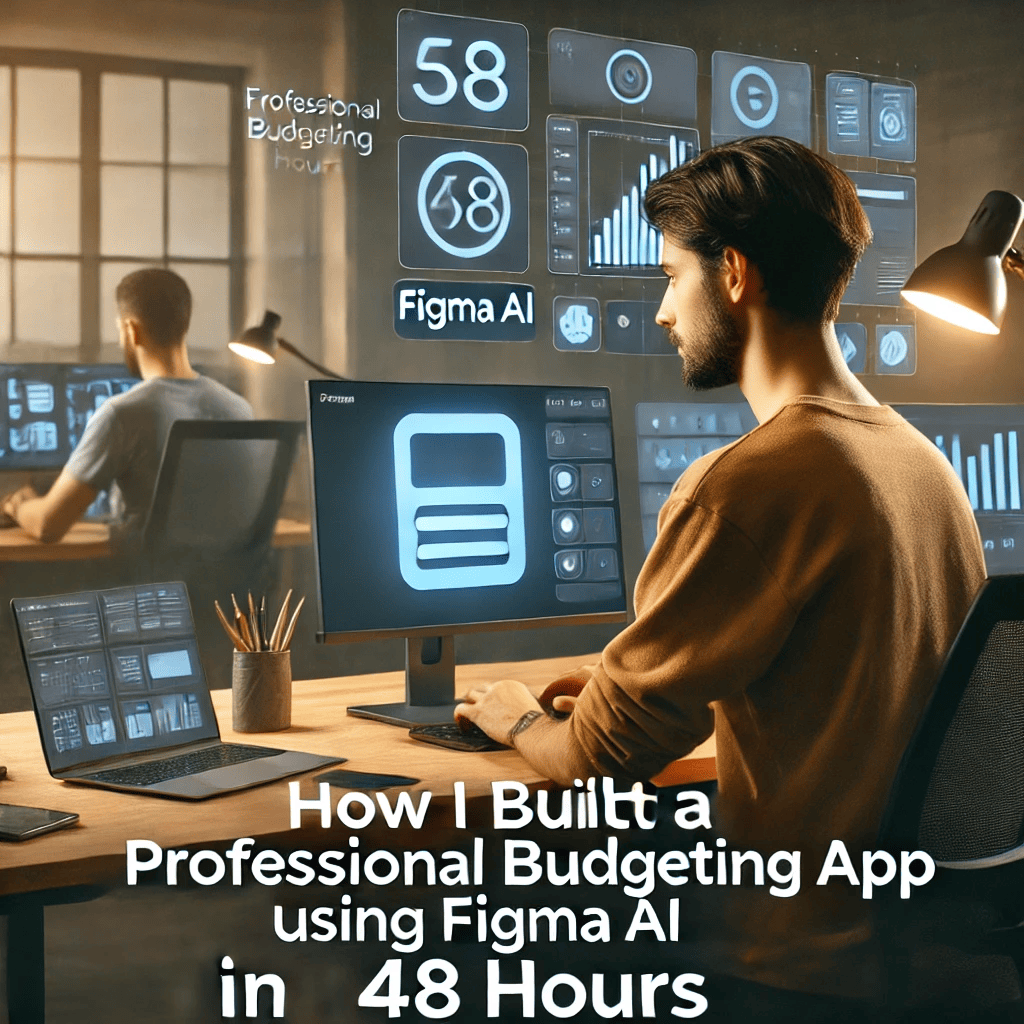How I Built a Professional Budgeting App Using Figma AI in 48 Hours
Transforming complex financial management into an intuitive budgeting app using Figma AI revolutionized my approach to freelancer finance tracking. The journey from conception to a fully functional application took just 48 hours, demonstrating the remarkable capabilities of artificial intelligence in modern app development. This comprehensive process involved utilizing Figma’s AI features for user research, design generation, and rapid prototyping, culminating in a practical solution for freelancers struggling with financial organization.
We strongly recommend that you check out our guide on how to take advantage of AI in today’s passive income economy.
Table of Contents
The Spark of Inspiration
A pivotal meeting with my accountant revealed significant gaps in my bookkeeping methods, particularly in tracking incoming funds and allocating them to specific purposes. This revelation sparked an idea: creating a straightforward visualization tool for monitoring money flow and distributing it across various financial buckets – investments, taxes, personal expenses, and emergency funds. The challenge extended beyond personal need; I wanted to understand if other freelancers faced similar challenges in managing their finances effectively.
Research and Discovery Phase
Understanding User Needs
The initial phase involved leveraging Fig Jam AI to generate comprehensive research insights about freelancer budgeting practices. The AI-powered brainstorming session created an extensive mind map exploring various aspects of freelancer financial management, including multiple income sources, expense categories, tax considerations, and savings strategies. This visualization helped identify potential features for the minimum viable product (MVP) and highlighted critical pain points in existing solutions.
Structured Interview Process
The research plan, generated through Fig Jam’s AI capabilities, outlined a systematic approach to gathering user insights. The AI-assisted interview question generation produced thought-provoking queries about freelancer budgeting habits, challenges, and current solutions. These questions formed the foundation for meaningful conversations with potential users, revealing valuable insights about their financial management struggles and needs.
Analysis and Synthesis
Market Research Insights
Deep diving into existing solutions revealed interesting patterns in user preferences and market gaps. Popular platforms like QuickBooks provided comprehensive features but lacked specific freelancer-focused solutions. The investigation uncovered a recurring theme: users appreciated the ability to categorize expenses and allocate funds, but desired more straightforward, freelancer-specific functionality.
Feature Definition and Flow Development
Utilizing Fig Jam’s AI capabilities, I created a detailed flowchart outlining the core functionality: balance addition, bucket creation, fund allocation, and balance updates. This systematic approach ensured that the application would address key user needs while maintaining simplicity and usability. The AI-generated decision tree helped visualize user paths and potential interaction points within the application.
Design Phase
Initial Wireframes
Figma’s AI-powered first draft feature generated initial wireframes that served as the foundation for the user interface. The AI understood the context and created layouts that aligned with modern mobile design principles. The wireframes included essential elements like balance displays, allocation controls, and bucket management interfaces.
Design Refinement
Moving beyond basic wireframes, I utilized Figma’s AI to generate more polished designs. The AI suggested appropriate color schemes, typography, and component layouts. The system automatically organized layers and implemented auto-layout features, significantly streamlining the design process. Interactive elements, such as sliders for fund allocation, were integrated to enhance user experience.
Prototyping and Interaction Design
Automated Prototyping
Figma’s AI streamlined the prototyping process by automatically connecting screens and establishing interaction patterns. This automated approach eliminated the tedious task of manually creating connections between different screens and states. The resulting prototype provided a clear visualization of the user journey and interaction flow.
Development Implementation
Converting Design to Reality
The transition from design to functional application utilized Buzzy’s powerful integration capabilities. The platform’s auto-markup feature transformed static designs into interactive components, while automatically generating the necessary database structure and functional requirements. This automation significantly reduced development time and potential implementation errors.
Database Structure and Functionality
Buzzy’s AI-powered system generated a comprehensive data model that included user tables, bucket information, and allocation tracking. The system automatically created the necessary relationships between different data elements, ensuring proper functionality and data integrity. The generated brief provided clear documentation of all system requirements and functional specifications.
Technical Implementation Details
Form Implementation
The technical implementation required careful attention to detail, particularly in form handling and data capture. Each input field was connected to the appropriate database table, ensuring proper data flow and storage. The system implemented proper validation and error handling to maintain data integrity and provide a smooth user experience.
Real-time Testing and Refinement
Throughout the development process, continuous testing using Buzzy’s preview functionality enabled rapid iteration and refinement. The ability to scan a QR code and instantly test the application on a mobile device streamlined the debugging process and allowed for immediate feedback on user experience improvements.
Final Thoughts and Future Developments
This project demonstrates the transformative power of AI-assisted development in creating practical solutions for real-world problems. The combination of Figma’s AI capabilities and Buzzy’s development tools enabled the creation of a functional financial management application in just 48 hours. This rapid development cycle suggests exciting possibilities for future applications of AI in software development and design.
The resulting application provides freelancers with a straightforward solution for managing their finances, while maintaining the flexibility to accommodate future enhancements and features. The success of this project highlights the potential of AI-assisted development in revolutionizing the way we approach application design and implementation.
The journey from concept to functional application exemplifies how modern AI tools can streamline the development process while maintaining focus on user needs and practical functionality. This approach to application development represents a significant step forward in making custom software solutions more accessible and efficient to create.

We strongly recommend that you check out our guide on how to take advantage of AI in today’s passive income economy.




